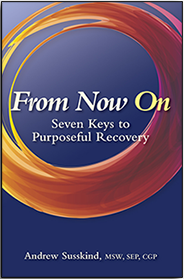Sometimes you’ll hear an old-timer at a twelve-step meeting tell a newcomer, “Do what’s in front of you and let go of the results.” This age-old advice is about taking things one moment at a time when life feels overwhelming. It removes future expectations, to focus on the here and now.
What’s so great about living in the present? It’s where your life force is most accessible—an oasis of emotional sobriety is available there. In fact, resiliency and buoyancy only exist in the here and now. But it takes mental muscle for you to breathe into each moment, and until now that muscle has been only infrequently used. Later on, we’ll take a deeper look at . . .
Continue reading...


